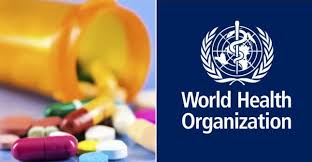
A new report by the World Health Organization (WHO) has sounded the alarm over a sharp rise in drug-resistant bacterial infections worldwide, warning that growing antibiotic resistance is threatening decades of medical progress.
According to new WHO data released on Monday, one in six laboratory-confirmed bacterial infections recorded in 2023 showed resistance to antibiotics, a growing threat that could render even minor wounds or routine illnesses potentially fatal.
“These findings are deeply concerning,” said Yvan J-F. Hutin, head of the WHO’s Antimicrobial Resistance (AMR) department. “As antibiotic resistance continues to rise, we’re running out of treatment options — and putting lives at risk.”
The WHO report attributes the worsening crisis to decades of antibiotic overuse in human medicine, livestock, and agriculture, accelerating the evolution of so-called superbugs, bacteria that can withstand even the strongest treatments.
AMR infections directly kill more than one million people each year and contribute to nearly five million deaths, according to the agency.
The study analyzed resistance levels across 22 commonly used antibiotics, including those prescribed for urinary tract, gastrointestinal, and bloodstream infections, as well as gonorrhoea.
Between 2018 and 2023, resistance rose in more than 40 percent of monitored antibiotics, with average annual increases ranging from five to 15 percent. For urinary tract infections alone, global resistance to standard drugs exceeded 30 percent.
Eight major bacterial pathogens were tracked in the report — including E. coli and Klebsiella pneumoniae, both of which can cause severe bloodstream infections that often lead to sepsis, organ failure, or death.
Alarmingly, over 40 percent of E. coli infections and 55 percent of K. pneumoniae infections worldwide are now resistant to third-generation cephalosporins, the frontline antibiotics used to treat them.
“Antimicrobial resistance is outpacing advances in modern medicine, threatening the health of families worldwide,” said WHO Director-General Tedros Adhanom Ghebreyesus.
While surveillance of AMR has improved in recent years, the WHO noted that nearly half of all countries still fail to report resistance data. “We are definitely flying blind in a number of regions with weak health systems and poor monitoring,” Hutin warned.
The highest resistance rates were found in Southeast Asia and the Eastern Mediterranean, where roughly one in three infections were drug-resistant.
The WHO urged governments to strengthen surveillance systems, curb unnecessary antibiotic use, and invest in the development of new treatments.



